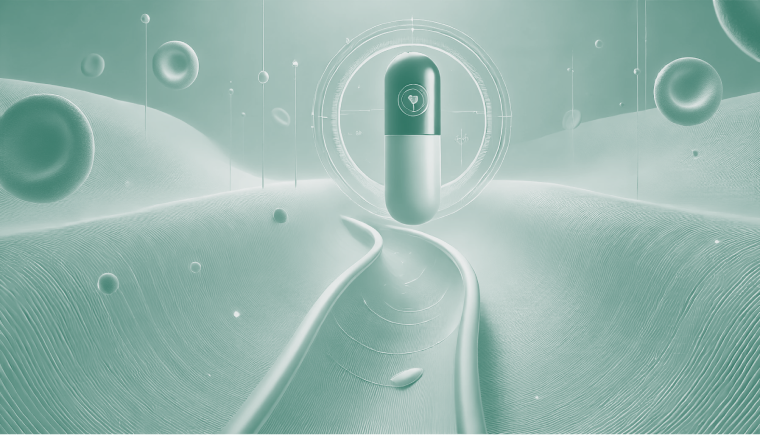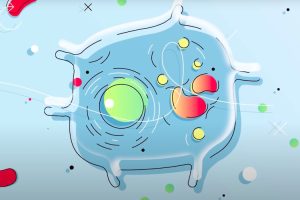The “mesh” of microtubule connectors helps new cel...
A microscopic web-like structure prevents genetic mistakes during the cell division process

In today’s world, it’s hard to find someone who has never taken medication. If you’re health-conscious, you’ve probably seen the information leaflet that comes with most medicines, listing contraindications and potential side effects. While some drugs have minor side effects, others may list alarming ones, such as anaphylactic shock, brain swelling, or coma.
Drugs we take do reach their target and work, but only a tiny fraction of the medication—on average, about 1%—reaches its intended destination. The rest spreads throughout the body, doing no good and often causing unintended effects. This overloads the body and leads to non-specific side effects. One of the biggest challenges in modern medical chemistry and pharmacology is making drugs more effective, reducing dosage, and minimizing side effects.
In the early 20th century, pharmacologist Paul Ehrlich introduced the “magic bullet” concept—an ideal drug that would target only the intended tissue without affecting others. While we haven’t fully achieved this ideal, numerous attempts have been made to improve drug efficacy. We’ve made significant progress in this area thanks to advancements in biotechnology, genetic engineering, and combinatorial chemistry.
Today, the most promising approach is targeted drug delivery. This strategy involves creating smart molecules capable of locating their target within the body. Unlike conventional drugs, which disperse randomly throughout the system, these molecules seek out and interact solely with their intended target. This reduces side effects and allows for lower drug dosages, making the treatment more affordable.
When looking at current developments, we can categorize these drugs into several vital classes. The first and most well-established class is monoclonal antibodies—molecules naturally found in the human immune system. Their primary function is to interact with specific molecules with high precision.
The development of monoclonal antibody technology in the mid-1980s revolutionized this field, enabling scientists to design antibodies targeting specific molecules, such as cancer markers or autoimmune diseases. These antibodies can be produced in a lab and administered to patients. Since monoclonal antibodies mimic those naturally occurring in the body, they generally don’t cause side effects. Once introduced into the bloodstream, they circulate for a long time, attaching themselves to their specific targets.
A well-known example of this class is bevacizumab (trade name: Avastin), which is used in cancer therapy. Tumors require a rich blood supply to grow, so they stimulate the development of new blood vessels by producing vascular endothelial growth factor (VEGF). Bevacizumab binds to VEGF, preventing it from signaling the growth of new vessels. As a result, the tumor starves from a lack of oxygen and nutrients.
Another class of targeted therapies includes small molecules, which are artificially synthesized and can either mimic the body’s natural metabolites or be entirely novel. Despite their differences, all small molecules share the ability to bind precisely to specific receptors or cell surfaces.
One successful example is the PSMA ligand (prostate-specific membrane antigen ligand). This small molecule binds specifically to prostate cancer cells and is used in diagnostics. By attaching it to a fluorescent dye, doctors can introduce it into a patient’s bloodstream and visualize cancerous cells under specific lighting during surgery or exams. This allows for precise identification of cancerous areas for treatment.
Additionally, PSMA ligands can be combined with radioactive isotopes. When bound to these ligands, the isotopes become a potent therapeutic tool, delivering toxic radiation directly to cancer cells. This is especially important for cancers like prostate cancer, which often metastasize to various organs, making surgical removal challenging. Even in cases of widespread metastasis, PSMA ligands can travel through the bloodstream, find cancer cells, and destroy them. Some post-therapy scans show a complete disappearance of metastases, leaving patients cancer-free.
A third approach in targeted drug delivery involves nanostructured particles or nanocontainers. Here, the drug is not delivered as a free molecule but encased within a nanocontainer designed to hold large quantities. These containers can carry hundreds or even thousands of drug molecules, significantly reducing the amount of the targeting ligand needed.
Nanocontainers offer distinct advantages, but they also come with challenges. It’s relatively easy to develop a specific molecule for monoclonal antibodies for almost any target, but the cost can be high. For example, a course of treatment with Avastin is far more expensive than standard medications.
The challenge for small molecules lies in the discovery process. Finding a highly effective molecule that is easy to synthesize is partly a matter of luck. It’s not always possible to find a molecule that works for every target, and its applications are limited.
Creating a nanocontainer-based drug delivery system is also complex, and the journey from idea to clinical application can take decades. Adding a targeting molecule to the mix further complicates the process, requiring additional testing and research.
As for the future, this field will continue to evolve rapidly. A breakthrough could come from Big Data and bioinformatics. Large datasets on molecular structures, tumor proteomes, and protein-gene interactions may help identify critical differences between healthy and diseased tissues. Improved three-dimensional modeling and computer simulations will enable the development of molecules precisely tailored to specific diseases.
While we still lack enough data for comprehensive breakthroughs, advancements in bioinformatics are promising. In the future, quantum computing may allow scientists to upload a target, run a program, and generate a 3D structure. Chemists could then synthesize the molecule, creating a drug that works with unprecedented accuracy. It sounds like science fiction, but we’re talking about the future.

A microscopic web-like structure prevents genetic mistakes during the cell division process

Descendants of starved worms appear to be more resistant to starvation and heat stress

Biophysicist Georg Büldt on using fluorescent protein markers, hormonal communication during pregnancy, and in...